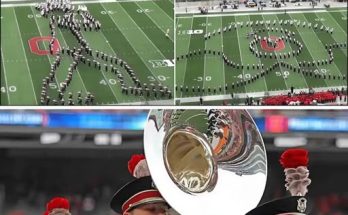Favorable Bids Cause Cost Decrease for Alabama Basketball’s New Practice Facility
The University of Alabama’s basketball program recently received welcome news in its pursuit of a state-of-the-art practice facility. Following months of anticipation, revised projections show a notable decrease in the cost of the new building, largely due to favorable bids from construction contractors. In a landscape where inflation, labor shortages, and material costs have been driving up expenses in nearly every sector, including higher education and athletics, Alabama’s ability to secure competitive bidding marks a rare bright spot and positions the university to move forward with a more cost-efficient project without sacrificing quality or scope.
Initially budgeted at over $60 million, the projected cost of the basketball practice facility has dropped by several million dollars thanks to unexpectedly low construction bids submitted during the procurement process. These bids came in during the final review phase after months of planning and design, which included consultations with architects, engineers, and athletic department stakeholders. The new cost, though still substantial, now reflects a significantly more economical path forward, offering the university and its athletics department increased flexibility in both spending and future planning.
Favorable bids can emerge due to a variety of market forces, and for Alabama, timing played a critical role. Industry insiders point to a slight dip in construction material prices compared to the previous two years and an increase in the availability of qualified contractors seeking work. Following the construction boom that defined much of the post-pandemic recovery period, the pace of new projects has leveled out, giving contractors greater incentive to undercut competitors and secure large-scale institutional work. For Alabama, this confluence of circumstances proved fortuitous, yielding lower-than-expected offers that stand to save the university millions.
The University of Alabama’s commitment to upgrading athletic facilities reflects its ongoing investment in maintaining elite status across all sports, not just football. The Crimson Tide basketball program has experienced a renaissance in recent years, highlighted by top national rankings, NCAA tournament appearances, and increasing prominence on the recruiting trail. As a result, the program’s infrastructure needs have evolved. The new practice facility is designed to match these aspirations, providing a space that rivals any in the Southeastern Conference and across the country.
The project’s specifications include two full-length practice courts, expanded locker rooms, strength and conditioning areas, meeting rooms, and cutting-edge sports science labs. Importantly, it also features space for recovery and rehabilitation, such as hydrotherapy pools and treatment rooms—resources critical to player health and development. The goal is to consolidate all the elements of player development, preparation, and performance under one roof, streamlining operations and maximizing efficiency for both players and staff.
While the finalized blueprints remain under wraps pending final approval, renderings suggest a sleek, modern structure that complements the architectural character of the university’s athletic complex. Proximity to Coleman Coliseum ensures that the facility enhances the day-to-day workflow for athletes and coaches while integrating seamlessly with existing infrastructure. By positioning the new building close to current athletic hubs, the university ensures convenience and cohesion, reducing the need for lengthy transitions between facilities and optimizing time management during the season.
The process that led to these favorable bids began with the university’s meticulous approach to planning. In selecting an architecture firm with deep experience in collegiate athletics, Alabama set high expectations early. From the beginning, cost control was a central theme, with university officials stressing value engineering—modifying designs in subtle ways to reduce cost without compromising function or aesthetics. Collaborative planning sessions emphasized the need for adaptability in construction techniques, design preferences, and materials sourcing to take advantage of market conditions. It was a strategy that paid off.
Alabama’s procurement team also deserves credit. Known for their disciplined and strategic approach to public bidding, they conducted a transparent and competitive process that attracted a range of regional and national contractors. The clarity and efficiency of the bid documents, along with the university’s reputation for prompt payment and effective project management, made the opportunity especially attractive to firms aiming to fill their 2025-2026 project calendars. This interest, combined with a highly competitive environment, resulted in a collection of bids that consistently undercut the original cost estimates.
The favorable bids have done more than simply reduce cost—they’ve opened the door to enhancing the facility further or redirecting savings to other athletics priorities. With the budget under less strain, Alabama can consider upgrades in interior finishes, technology systems, or even outdoor landscaping, creating a better overall experience for players and fans alike. Alternatively, some of the savings could be channeled into future capital projects or reserved for unforeseen contingencies that may arise during construction.
Financial prudence has become increasingly important for university athletic departments in an era of rapidly shifting NCAA policies, changing revenue streams, and evolving expectations from student-athletes. With new NIL (Name, Image, and Likeness) rules and the potential for revenue-sharing models on the horizon, fiscal flexibility could prove to be a major competitive advantage. By building a premier facility at a reduced cost, Alabama improves its recruiting appeal and player development pipeline without overextending its financial commitments.
The broader implications of this development extend beyond basketball. Alabama’s ability to execute a high-profile facility project under budget sends a signal to donors, alumni, and prospective recruits across all sports. It demonstrates that the university is not only committed to excellence but is also a careful steward of its resources—an increasingly important message in today’s financially conscious environment. As athletic departments nationwide grapple with rising costs and shifting revenue models, Alabama’s example could become a case study in strategic capital investment.
Construction on the new facility is expected to begin in earnest later this year, with an estimated completion timeline of 18 to 24 months. The anticipation surrounding the project is palpable within the basketball program and the university community. Head coach Nate Oats has consistently emphasized the importance of infrastructure in maintaining a winning culture, and this facility represents a crucial next step in his vision for the program’s continued ascent. In recent interviews, Oats praised the university’s leadership and administration for pushing the project forward and creating the conditions necessary to realize this long-standing goal.
Student-athletes are likely to be among the biggest beneficiaries of the cost savings. With more room in the budget, there’s a higher probability that the final facility will include cutting-edge amenities, enhanced nutrition services, and player-centric features that improve daily life for those who represent the Crimson Tide on the court. From personalized lockers to interactive video rooms and immersive analytics tools, the final product could reflect not just functionality but innovation.
Recruiting is another area where the impact of a top-tier, efficiently built practice facility will be felt. High school prospects and transfer portal players increasingly look for environments that support personal growth, on-court development, and professional preparation. By offering a state-of-the-art space that rivals NBA standards, Alabama positions itself as a destination program—one that provides every possible resource for success. The facility will stand as a tangible reminder that the university backs its ambitions with action.
In the final analysis, the story of Alabama basketball’s new practice facility is about more than bricks and mortar. It’s a testament to strategic planning, market awareness, and institutional alignment. In securing favorable bids, the university not only saved money—it created momentum. That momentum will carry into fundraising efforts, recruiting visits, and the everyday energy of a basketball program with its sights set on national championships. While the headlines will celebrate cost savings, the real victory lies in what those savings make possible: a future where Alabama basketball continues to rise, supported by facilities that match its ambition.



